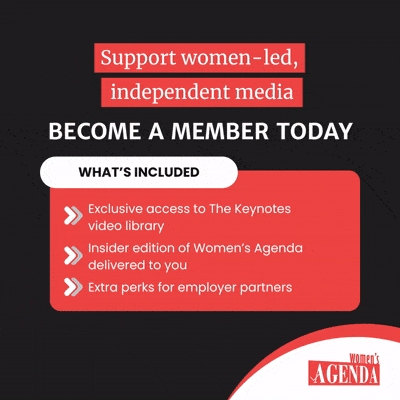It makes sense, as each of these segments have different needs and objectives.
And yet women – who make up half of our population – have not been particularly well catered for by traditional financial products.
I was on a panel recently at the Financial Services Council Summit 2019 in Sydney to discuss the Future of Wealth, and one of the questions put to the audience was: what the most important segment for the wealth industry to focus on. The overwhelming majority said it was women. But this wasn’t a women’s event – 85 percent of the audience were men.
While it was great to see the audience’s recognition that women were vastly under-served when it comes to financial services, what is surprising to me is that women are even referred to as a ‘segment’.
But, classifying women as such does serve a useful purpose in highlighting that they have vastly different experiences when it comes to money.
The fact is, women have different life cycles as income earners. They are more likely to take career breaks, work part-time, out-live their partners, and have a longer life span. Taking time off work can also impact a woman’s ability to receive promotions and pay rises, and even find meaningful employment when she’s ready to return to the workforce.
All of this directly conspires against a woman’s earning and saving potential, and the impact can be devastating. You only need to look at the median superannuation balance in Australia, which is $110,000 for men and only $36,000 for women. Or the fact that women retire with around half the resources of their male colleagues.
The implications of this go beyond the ethics of gender equality. It’s resulting in older women suffering extreme financial hardship and having to live on the streets. It’s scary and heartbreaking that women over 55 are now the fastest growing group of homeless people in Australia.
This could happen to your mum, your aunt, yourself, indeed any woman who despite having spent her entire working life taking care of her family, finds herself with inadequate funds to support herself in retirement.
The system is clearly broken.
Helping to secure the financial future of women is the mission we’ve undertaken at FairVine. Designed around deep research into the needs of women, we’ve created a product offering practical tools and resources that make a tangible difference to a woman’s financial assets.
The powerful FairRewards feature tops up the super balance whenever members purchase items through participating brands; while the ‘RoundUps’ feature rounds up everyday expenses to a specific value (such as rounding up a $3.50 coffee to $4), with the difference directly deposited to super. And – women don’t pay fees if they take parental leave.
These small set-and-forget features can make a huge difference to a retirement fund thanks to the power of compounding interest.
Creating financial products that are tailored to the unique needs of women isn’t just a clever marketing ploy. It’s something that needs to happen on a societal level to help address the uneven distribution of wealth between men and women.
The one-size-fits-all approach to financial services doesn’t work, and women in particular are suffering the consequences. It’s incumbent on financial institutions to offer products and tools that help to address the gender wealth imbalance. And this is more than just using pretty pastel colours and pictures of happy women running through meadows. We need real solutions that can actually change the wealth outcomes of women for the better.
Anything short of that is mere lip service.


